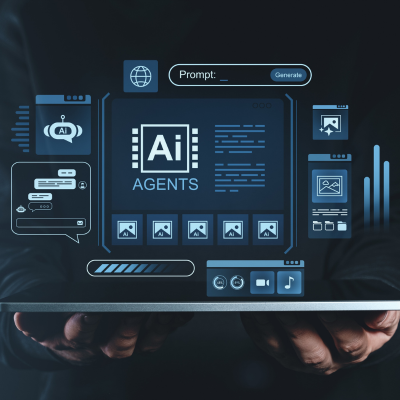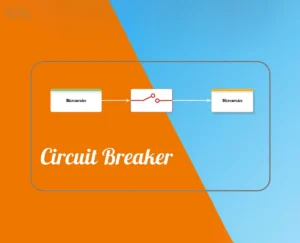Picture a marketing team that never faces creative block, where every campaign message feels uniquely personal, and data-driven decisions happen in real time. This is not a distant vision—it’s today’s reality, powered by generative AI in digital marketing. Tools like ChatGPT are leading this transformation, enabling marketers to generate compelling copy, uncover deep audience insights, and automate repetitive tasks—all while preserving the human touch that builds trust and loyalty.
Generative AI, especially ChatGPT, has evolved from a novelty to a necessity. Its applications now span content ideation, customer engagement, predictive analytics, and beyond. For businesses and professionals, mastering these technologies isn’t just an advantage—it’s essential for staying competitive.
In this guide, we’ll explore the evolution, latest trends, and advanced tactics of generative AI in digital marketing, share actionable insights and a real business case study, and highlight how Amquest’s Digital Marketing and Artificial Intelligence course prepares you to lead in this rapidly changing field.
The Evolution of Generative AI in Marketing
Digital marketing has always been about delivering the right message to the right person at the right time. Traditionally, this relied on demographic data, surveys, and marketer intuition. Today, AI algorithms analyze real-time customer interactions, predict behaviors, and personalize experiences at an unprecedented scale.
The rise of large language models (LLMs) like ChatGPT marks a turning point. Unlike early, rule-based chatbots, modern generative AI understands context, mimics human conversation, and adapts to brand voice. These tools can brainstorm campaign angles, iterate copy at lightning speed, and even pressure-test messaging before launch.
This shift is part of a broader trend toward hyper-personalization and automation. AI now mines unstructured data—social media posts, images, videos—to uncover consumer preferences and brand perceptions that were once invisible. The result? Marketing that’s more intelligent, responsive, and effective.
Latest Features, Tools, and Trends in Generative AI for Digital Marketing
Content Creation at Scale
ChatGPT excels at content ideation, suggesting trending topics, crafting catchy headlines, and planning content calendars. Marketers can generate blog drafts, social media posts, and email campaigns in minutes, freeing time for strategy and creativity.
Example Prompt: “Brainstorm five creative campaign ideas for our upcoming product launch targeting millennials. Include a theme, tagline, and one or two core tactics per idea.”
Practical Tip: Use ChatGPT to draft a month’s worth of social media content in a single session, then refine with your team’s unique insights and brand voice.
Audience Research and Personalization
Generative AI analyzes search queries, social interactions, and purchase history to reveal audience preferences and pain points. This enables hyper-personalized campaigns that resonate deeply, increasing engagement and conversion rates.
Workflow Example: Upload customer data (CSV/JSON) to ChatGPT for instant analysis of browsing behavior, feedback, and demographics. Use these insights to refine messaging and product offerings.
Real-World Impact: A retail brand used AI to segment its email list based on purchase history and browsing behavior, resulting in a 20% lift in open rates and a 15% increase in conversions.
Automated Advertising and Optimization
AI tools like ChatGPT can analyze Google Ads performance data, identify high-performing keywords, and suggest bid optimizations. This level of automation allows for real-time campaign adjustments, maximizing ROI with minimal manual effort.
Prompt Example: “Analyze my Google Ads keyword dataset. Highlight keywords with ROA above target, flag negative keywords, and suggest new targets for testing.”
Pro Tip: Combine AI-generated insights with human judgment to avoid over-optimization and maintain brand alignment.
SEO and Search Intent
Beyond keyword research, generative AI helps marketers understand search intent—why users are searching and what they might do next. This insight drives content that answers real questions and guides users through the buyer’s journey.
Case in Point: For the query “vegan sausage made with whole food ingredients,” ChatGPT identified both informational (recipes) and transactional (buying) intent, helping marketers craft content for each stage.
Advanced Tactics for Generative AI Success
Building a Messaging Framework
Use ChatGPT to create a messaging framework for new products or campaigns. Define key benefits, proof points, and emotional triggers, ensuring consistency across channels.
Prompt Example: “Build a messaging framework for our eco-friendly sneakers. Include key benefits, proof points, and emotional triggers.”
Customer Journey Mapping
Map the customer journey with AI, identifying touchpoints, goals, and potential pain points at each stage. This holistic view informs content, ads, and support strategies.
Prompt Example: “Create a customer journey map for our online fitness coaching service. Break it into stages, goals, touchpoints, and pain points.”
Pressure-Testing Campaigns
Before launch, use AI to simulate customer reactions and refine messaging. This reduces risk and increases the likelihood of campaign success.
Tip: Run A/B tests on AI-generated ad copy to validate performance before scaling.
The Power of Content, Storytelling, and Community
Generative AI doesn’t replace human creativity—it amplifies it. The best marketers use AI to handle repetitive tasks, freeing them to focus on storytelling, community building, and authentic engagement.
Real-World Example: A fashion brand used ChatGPT to generate weekly blog posts and social content, then trained community managers to add personal anecdotes and respond to comments in real time. The result was a 30% increase in engagement and a stronger sense of brand community.
Influencer Partnerships and User-Generated Content
AI can identify potential influencer partners by analyzing social media trends and audience overlap. It can also help craft collaboration briefs and track campaign performance.
Tip: Use ChatGPT to draft influencer outreach emails and collaboration proposals, ensuring alignment with brand voice and campaign goals.
Measuring Success: Analytics and Insights
Generative AI tools integrate with analytics platforms to provide actionable insights. Marketers can track content performance, ad ROI, and customer sentiment in real time, making data-driven decisions faster than ever.
Key Metrics to Watch:
- Content engagement rates
- Conversion rates from personalized campaigns
- ROI on AI-optimized ad spend
- Customer satisfaction and sentiment trends
Business Case Study: StyleHub’s AI-Driven Transformation
Brand: StyleHub (name changed)
Challenge: Content fatigue, inconsistent messaging, slow campaign iteration.
Solution: Integrated ChatGPT into content and advertising workflows.
Tactics Used:
- Automated blog and social media content creation
- Personalized email campaigns based on customer behavior
- Real-time ad copy optimization using performance data
- Customer journey mapping to identify drop-off points
Results:
- 40% reduction in content production time
- 25% increase in email open rates
- 15% boost in ad conversion rates
- Improved customer satisfaction scores
Takeaway: Generative AI enabled StyleHub to scale personalized marketing without sacrificing quality or brand voice.
Actionable Tips for Marketers
- Start Small: Pilot ChatGPT for content ideation or email drafting. Measure impact before scaling.
- Combine AI with Human Insight: Use AI for first drafts, then refine with your team’s expertise.
- Leverage Data: Feed customer data into AI tools for deeper insights and personalization.
- Stay Ethical: Ensure transparency in AI-generated content and respect user privacy.
- Keep Learning: The field evolves rapidly. Stay updated with courses like Amquest’s Digital Marketing and Artificial Intelligence program.
Ethics, Risks, and the Human Edge
While generative AI in digital marketing offers tremendous advantages, it’s not without risks. Over-reliance on automation can lead to generic messaging and missed opportunities for authentic connection. Ethical concerns around data privacy and bias in AI models require vigilant oversight.
The most successful marketers use AI as a tool—not a replacement—for human creativity, judgment, and ethical decision-making.
Why Amquest’s Digital Marketing and Artificial Intelligence Course Stands Out
The digital marketing landscape is changing faster than ever, and education must keep pace. Amquest’s Digital Marketing and Artificial Intelligence course is designed for professionals who want to lead, not follow, in the age of AI.
Curriculum Highlights:
- AI-Powered Learning: Modules cover ChatGPT, generative design, automated ads, and machine learning in marketing—equipping students with future-ready skills.
- Hands-On Projects: Work on live campaigns, build AI-driven strategies, and gain experience with the latest tools.
- Industry Partnerships: Collaborate with leading brands in Mumbai and beyond, with internships and placement opportunities.
- Expert Faculty: Learn from professionals with a decade of experience in digital marketing and AI.
- Flexible Access: Available both in Mumbai and online nationwide, making cutting-edge education accessible to all.
Unlike generic programs, Amquest’s course emphasizes practical skills, ethical AI use, and measurable outcomes—ensuring graduates are ready to lead in the age of generative AI in digital marketing.
The Future of Generative AI in Digital Marketing
Generative AI in digital marketing is no longer optional—it’s a core competency. From ChatGPT-powered content creation to hyper-personalized campaigns and real-time analytics, these tools are reshaping how brands connect with audiences.
The professionals and brands that embrace this shift will lead the next era of marketing innovation.
Ready to future-proof your career? Explore Amquest’s Digital Marketing and Artificial Intelligence course and gain the skills, experience, and industry connections you need to thrive.
FAQs
How is ChatGPT used in digital marketing?
ChatGPT aids in content creation, audience research, ad copy optimization, and customer engagement, making marketing faster and more personalized.
Can generative AI replace human marketers?
No—AI excels at automation and data analysis, but human creativity, strategy, and ethical judgment remain essential for authentic, effective marketing.
What are the risks of using AI in marketing?
Potential risks include over-reliance on automation, ethical concerns around data privacy, and the need for human oversight to maintain brand voice and accuracy.
How does Amquest’s course differ from others?
Amquest’s course combines AI theory with hands-on projects, internships, and instruction from industry experts, offering a practical, future-ready education in digital marketing and artificial intelligence.
What skills will I gain from Amquest’s program?
You’ll learn AI copywriting, automated campaign management, data-driven personalization, and how to measure the impact of AI in marketing—all with real-world applications.
How can I start using generative AI in my marketing today?
Begin with content ideation and drafting using ChatGPT, experiment with personalized email campaigns, and gradually integrate AI analytics into your strategy for continuous improvement.
“The future of marketing belongs to those who can harness the power of AI without losing the human touch.”
— Amquest Faculty, Digital Marketing and Artificial Intelligence










